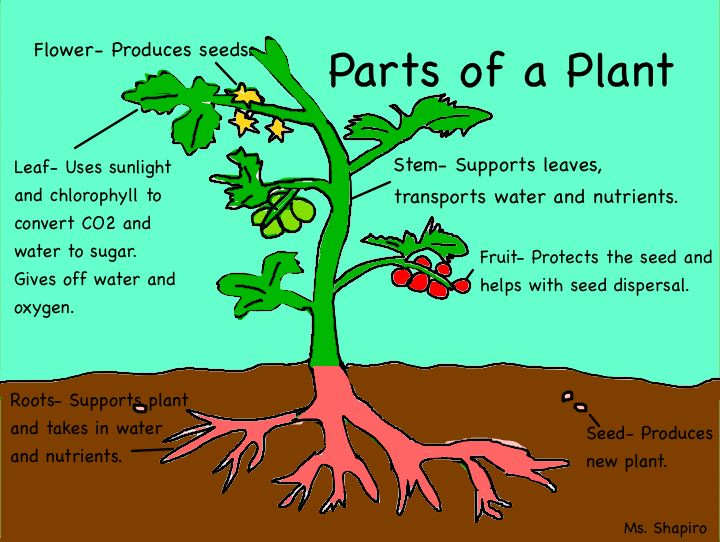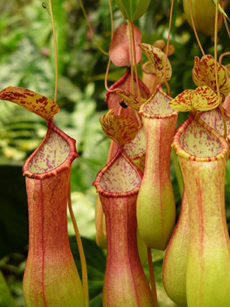Plants song
2. Click on the link below and listen to the song.
http://www.youtube.com/embed/sXrnHff2Kjc
Movie for how plants grow
You will watch a short video that will help you to learn what it is that plants need to survive!
http://player.discoveryeducation.com/index.cfm?guidAssetId=DA7848C6-36E8-4112-BDAB-A7753D0E4952
2. Click below to print your note taking sheet on plant parts and function. There will be an extra blank paper. You will need this later in the webquest. You will need to print two copies, one for each person.
plant parts and functions organizer 2.pdf
3. It is time to explore the wide world of plants. Click on the link below to learn about plant parts and functions. You will start with Case One and move through Case One only to find all of your information. Go in order and read carefully with your partner. Make sure you jot down enough information (2+facts) that describes each part and what it does. You will have a chance to explore the rest of this site (Cases 2-6) later.
http://urbanext.illinois.edu/gpe/gpe.html
4. Now it's time to watch how a seed transforms into a plant. This is a fast version. We know it takes much longer in real life. Click the link below to watch the video.
http://www.teachersdomain.org/asset/tdc02_vid_plantsgrow/
5. Click on the link below and sketch the life cycle of a plant on your blank piece of paper (we will paste this into your science journal later).
http://www.theseedsite.co.uk/lifecycle.html
6. Let's take a quiz and see how much we learned about the life cycle of a plant. Click the link below to start.
http://www.teachersfirst.com/getsource.cfm?id=7144
Click on the name of the plant part.
Read about each part.
When you are finished reading about each part of the plant, write 2 facts in your Science Notebook about the part. When you are done, you should have 8 facts!
Roots
Stem
Leaves
Flower
The Life Cycle of a Plant

Plants are very important living things. They provide food for animals and for people. They are all around us: in oceans, around our homes, in gardens, and in the mountains. In order for you to understand how important plants are you need to first know the life cycle of a plant. The life cycle of a plant is a series of growth from a tiny seed to a mature flower or fruit.
Here is some vocabulary that you will need to know in order to understand the life cycle of a plant. The vocabulary is sequential with the life cycle.
A.) Seeds:
Click here to see a slideshow on the different types of seeds. The seed is the embryo or a baby plant. This tiny seed is the beginning of a new plant. Not all plants have the same seeds some seeds are different.
B.) Seedling:
Click on seedling and see what a seedling look like. The seedling is the beginning sprout of a flower. The first sight of growth. Here is a picture that will help you clearly see what a seedling is.

C.) Roots:
Click the word roots and you will see another image of a root. The roots of a plant grow underground and absorb water for the plants survival. Here is a picture of the roots of a plant.

D) Stem:
Click the word stem and you will see what part of the plant is the stem. The stem is the backbone of a plant that gives it support and strength to stand straight. Here is a picture of an anole that is holding the stem.

E.) Leaf:
Click here to see a picture of a leaf. Leafs can come in all shapes and sizes as well as many different colors. The leaf grows off of the side of the stem or all over on branches of trees. The leaf of a plant harvests sunlight. It helps in the process of photosynthesis.

F.) Flower:
Click here and you well see many different types of flowers. Flowers come in all shapes and colors and smell beautiful. The flower is the adult part of a plant. The flower is where the pollen or ovules are kept. Pollen and ovules help in reproduction.

Now that you know the vocabular, you will be able to see the life cycle of a plant or tree. Click on the Life Cycle button so you you can see a diagram of all the stages put together. This website will give you a quick review of how the life of a plant begins.
Parts of a Plant

The anatomy of a plant is important to know. When you pick up a flower, don't you ever wonder what all those parts are? No more wondering! I have created for you an easy to do labeling activity. This will help you to become familiar with the parts of a plant and how everything works. Click on this Labeling Activity and scroll down until you see PLANT LABELS. Click on the diagram and start labeling! Lets see if you know what the parts of a plant are.
Now that you have labeled the parts of a plant go to Plant Parts take both tests. These tests should only take you about 20 minutes.

Photosynthesis

Plants eat and grow just like every other living organism except plants make their own food. Photosynthesis is the process of making their own energy or food. Plants need sunlight, water, good soil, minerals, and room to grow healthy.
How does photosynthesis work? The plant absorbs sunlight, water, minerals, and carbon dioxide from the environment. The plant needs these essential elements to develop into a healthy flowre. These elements help the plant make sugars which is food for the plant. The plant in return releases oxygen which helps animals and humans breath. Take a look at this picture and see how photosynthesis works. Photosynthesis
Where does photosynthesis happen? Photosynthesis occurs in the leaves of a plant. The leaves absorb sunlight and green in their leaves to make sugars which give the plant food. Watch this Video on photosynthesis. After the video share with your neighbor what you have learned. After you have watched the video fill out the Photosynthesis Worksheet.
Carnivorous Plants
Did you know that not all plants make their own food? Some plants have to obtain their nutrients from insects. The habitat of a plant impacts the way a plant survives. Certain plants live in marshes or near bogs which are poor in nutrients. These plants have to eat meat in order for them to thrive. Here are just a few of the plants that have to eat bugs to stay alive.
The Pitcher plant below captures has hair follicles pointing downward. When an insect flies in the pitcher plant it gets stuck and can not fly out. The chemicals secreted from the plant will slowing chemically eat away at the insect for nutrients.

The Venus Fly trap also catches insects for nutrients and food. For some background information about the venus fly trap click here Venus Fly Trap.

Can you look to see what other kinds of carnivorous plants there are in the world?
http://www.tooter4kids.com/Plants/parts_of_plants.htm
http://www.bbc.co.uk/schools/scienceclips/ages/5_6/growing_plants_fs.shtml
http://www.superteacherworksheets.com/science/plant-parts_WMTFQ.pdf
After reading about the parts of a plant, fill out your diagram in your Plant journal.

Task 2
Explore these websites, then write about one of the parts of a plant and what it does.
http://www.mbgnet.net/bioplants/parts.html
http://urbanext.illinois.edu/gpe/case1/c1facts2a.html

Task 3:
Go to these websites and do these activities.
http://www.ngfl-cymru.org.uk/vtc/plants_light_water_to_grow/eng/Introduction/MainSession.htm
http://www.bbc.co.uk/schools/scienceclips/ages/5_6/growing_plants_fs.shtml
When done completing this activity, go to your teacher to plant your see
Wow! Did you learn something you didn't know before?
Process
First, you need to know the four parts of a plant. Click below to print your worksheet for the four parts of a plant.
Plant Parts Worksheet

Now click below to see the four parts of a plant answer sheet.
Plant Parts Answer Sheet
Use your answer sheet to fill in the blanks on your worksheet.

Now I need you to find out what each plant part does. Click below to find out what each plant part does.
What each Plant Part does.
Now that you can name the parts of a plant, I need you to find the parts we eat in the supermarket. Click below to play a game that shows what plant parts we eat.
Plant Parts We Eat

Now that you have found many plant parts we eat, I have one last job for you to do. Click below and find out how to grow a plant. Just follow the steps and have fun.
Plant Parts Game
Comments (0)
You don't have permission to comment on this page.